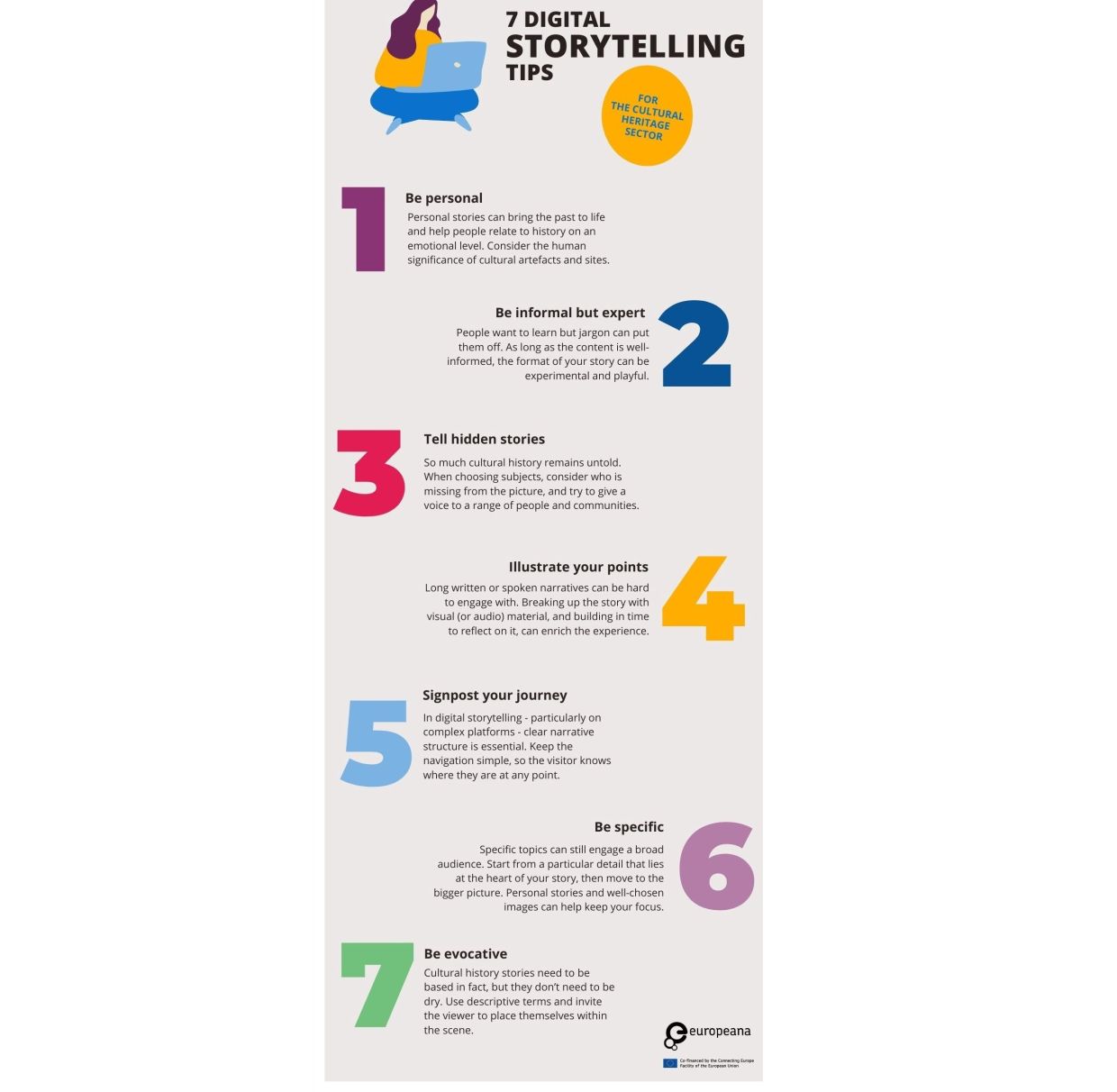There is an exciting - and sometimes overwhelming - array of possible storytelling methods available online. But while digital storytelling can take many different forms, the best examples all engage people on a personal and emotional level.
Audiences want to feel informed by digital stories, but also curious, immersed, inspired and connected by them. It is this that sets storytelling apart from other content types; and it is this that gives storytelling such a role to play in engagement and community-building across the cultural heritage sector.
Based on the emotional engagement experienced by Task Force members and the trends identified in the numerous examples we considered, we recommend the following tips for creating emotionally engaging storytelling with digital culture.



